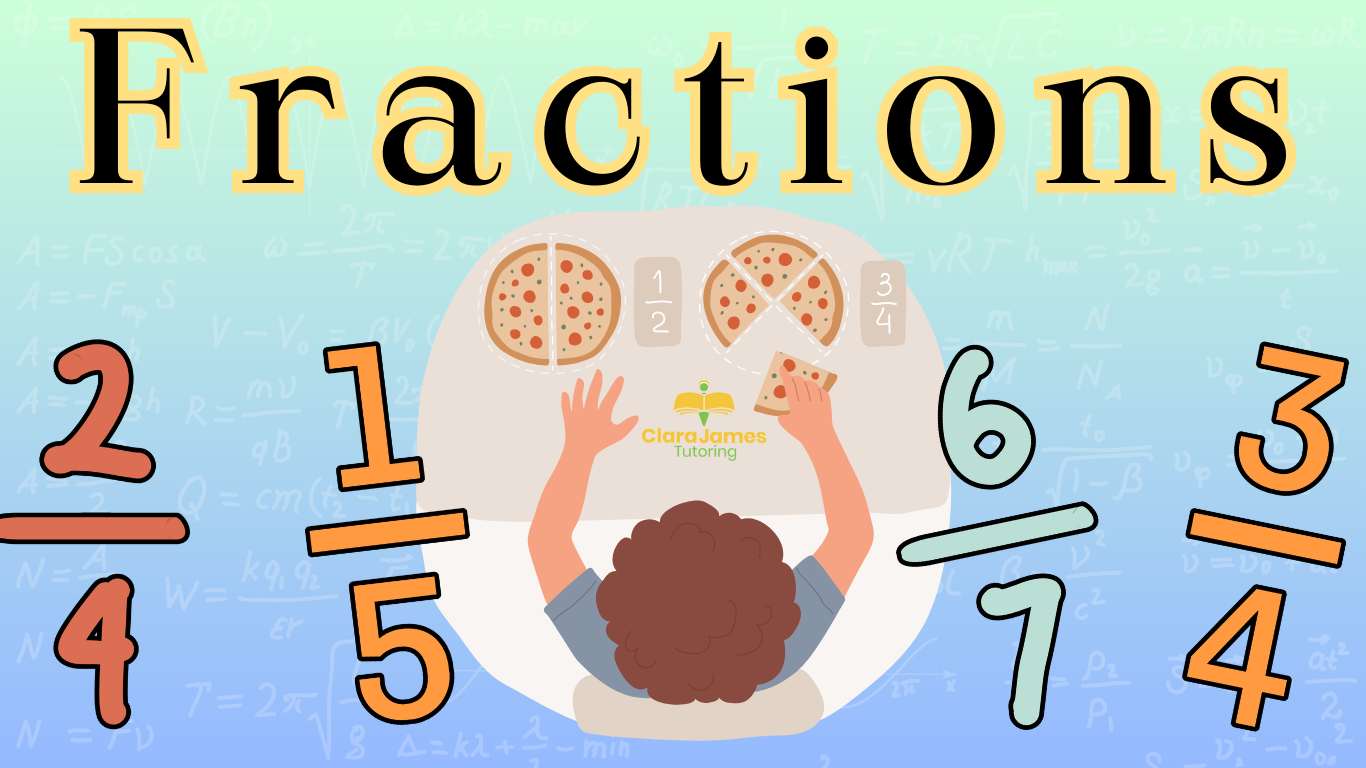Clara James Tutoring
BLOG POSTS

Make sure it's an appropriate explanation
I think one of the key things we need to remember is that just because it makes sense to us, and it seems like a logical explanation, it doesn’t necessarily make sense to the person we’re explaining it to.
A couple of years ago I worked with a lad who is Autistic. He was in his late teens at the time and although this is an extreme example, I think it demonstrates my point… We were working on fractions.
As I normally do, I explained that if we had a cake, cut it into two identical slices, and I ate one of those slices, I would have eaten 1 out of 2 slices (1/2).
Ok, we were ok so far.
Then suggested that if we cut it into 4 identical slices and I again ate one of those slices, I would have eaten 1 out of 4 slices (1/4).
Ok, this still made sense, and we were both happy with the logic.
I then suggested that we cut that cake into 8 identical slices, and I again ate one of the 8 slices. I would have eaten 1/8.
STOP!

If we cut the cake that small, it would crumble.
True, I hadn’t thought of that...
My logic, my explanation was perfect in my mind and full of flaws in his.
For the rest of the hour, we didn’t get past the issue of the crumbs, so we had to leave it and come back to it at a later date.
For me, a lesson learned.
Fractions are taught from primary school right through to the end of GCSEs and no doubt beyond at varying levels of difficulty.
So, an understanding of the basics will always be useful so that you have something firm in place to put the following harder aspects on.
Normally, we would look at what a fraction is. Then adding fractions that have the same denominator (bottom number). Then subtracting fractions again with the common bottom number.
Life gets harder once the denominator changes and actually, if you are confident with your times tables, multiplying them or dividing them is actually an easier next step.
But for today, I don’t think that explained much at all, except that we need to remember that just because it makes logical sense to us, it may not to those we are talking to…
Morning,
I hope the week is going well.
So many people seem to be doing D of E and work experience
at the moment, good luck if that’s you and if you’re at Marlow Camp next
fingers crossed for good weather!
I’ve just finished a lesson on division. It seems to be
something that messes with the brains of so many people.
I found it got easier when I stopped thinking about it as
division and instead thought about it as multiplication. So, if for example I
had the question 396 divided by 3, I would look at it as 3x what = 3. My answer
would be 1. How many times would I need to multiply 3 to get to 9, (my answer
would be 3). Then 3x something = 6. My answer would be 2. Giving me the overall
answer of 132.
I know that’s a really simple example but hopefully it explains
my point.
Thankfully in schools they don’t often seem to need to do
long division, but I’ve worked with a couple of adults (generally nurses for
some reason) who have needed it.
I think I’ll explain this one in a video, as it will be too
complicated to explain it with words as bits get put all over the place. I hope
this makes sense though:
Enjoy the rest of the week and speak soon,
Dawn

